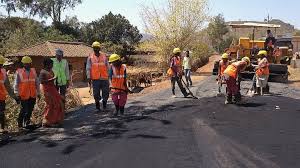Rural development challenges are extensive and multifaceted, affecting millions of people across the globe. In many rural areas, limited access to essential services like healthcare, education, and clean water restricts the potential for growth and improvement in living standards.
Infrastructure deficiencies, such as poor road networks and unreliable electricity, isolate rural communities from urban centers, reducing opportunities for trade, employment, and knowledge exchange.
Additionally, rural areas often struggle with low levels of economic diversification, leaving them heavily dependent on subsistence agriculture or a narrow range of activities that generate limited income.
These issues contribute to a cycle of poverty and underdevelopment that is difficult to break. Without access to quality education, rural residents face limited career prospects, while poor healthcare services increase vulnerability to disease and lower productivity.
Environmental challenges, such as soil degradation and climate change, further compound these issues, as rural communities often lack the resources or technology needed to adapt effectively.
As a result, rural populations are disproportionately affected by poverty, which hinders not only their own development but also broader national economic growth.
Agriculture, however, has the potential to address many of these challenges and can play a pivotal role in rural development and poverty reduction. As a primary economic activity for most rural households, agriculture directly influences food security, income levels, and employment opportunities.
By investing in agricultural development, governments and organizations can empower rural communities, enabling them to improve their livelihoods and reduce poverty.
For example, enhanced access to agricultural technology, modern farming techniques, and quality inputs can significantly boost crop yields and farm productivity, leading to increased incomes for rural families.
Additionally, promoting agricultural diversification such as incorporating livestock farming, horticulture, or aquaculture can reduce reliance on single-crop farming, which is vulnerable to market fluctuations and climate events.
Furthermore, agricultural development can stimulate rural economies beyond just farming. The agricultural sector supports a range of ancillary industries, including transportation, processing, and retail, all of which create additional job opportunities.
By building stronger linkages between agriculture and other sectors, rural areas can cultivate more robust, diversified economies that are better equipped to overcome poverty and achieve sustainable growth.
Additionally, by supporting agricultural cooperatives and farmer organizations, rural communities can gain greater bargaining power in markets, helping them secure better prices for their produce and encouraging fairer trade practices.
Agriculture is a fundamental driver for rural development and a key tool in the fight against poverty. When properly supported, agricultural initiatives can transform rural areas, fostering self-reliance, enhancing food security, and improving the overall quality of life for rural populations.
Therefore, targeted investments in agriculture coupled with policies that address rural infrastructure, education, and healthcare are essential for addressing the challenges that rural communities face and for building a more equitable and prosperous future.
Key Factors Contributing to Poverty in Rural Areas

1. Limited Access to Resources: Many rural communities lack access to essential resources such as credit, land, and education, which hinders their ability to improve their economic situation.
2. Poor Infrastructure: Inadequate transportation, healthcare, and communication infrastructure in rural areas limit opportunities for economic growth and access to markets.
3. Lack of Employment Opportunities: Rural areas often face high unemployment rates due to a lack of diverse economic activities, leading to increased poverty levels.
4. Environmental Vulnerability: Rural communities are frequently affected by environmental challenges such as climate change, natural disasters, and soil degradation, which can exacerbate poverty.
The Importance of Agriculture in Rural Development
1. Primary Source of Livelihood: Agriculture is often the main source of income and employment for rural populations, providing food and economic security.
2. Community Development: Agricultural activities can lead to the development of local businesses, schools, and healthcare facilities, improving overall community well-being.
3. Cultural Significance: Agriculture is deeply rooted in the cultural identity of many rural communities, promoting traditions and social cohesion.
4. Sustainable Practices: Integrating sustainable agricultural practices can help protect the environment and ensure long-term productivity, benefiting rural communities.
How Agriculture Can Drive Economic Growth
1. Increased Income Generation: Enhancing agricultural productivity can lead to higher incomes for farmers, improving their standard of living and contributing to local economies.
2. Job Creation: A thriving agricultural sector can create jobs not only on farms but also in related industries such as processing, distribution, and retail.
3. Export Opportunities: Improved agricultural practices can lead to surplus production, enabling rural areas to engage in international trade and generate foreign exchange.
4. Value Chain Development: Investing in agricultural value chains—such as processing, packaging, and marketing can create additional income and employment opportunities in rural areas.
Read Also: Hookworms: Description, Damages Caused, Control and Preventive Measures
Challenges Facing the Agricultural Sector

1. Climate Change: Agriculture is highly susceptible to climate change, which can lead to crop failures, reduced yields, and increased vulnerability for rural communities.
2. Access to Technology: Many rural farmers lack access to modern agricultural technologies, which can hinder productivity and limit their competitiveness.
3. Market Access: Farmers often face challenges in accessing markets, including inadequate transportation, high transportation costs, and market fluctuations.
4. Policy and Regulatory Barriers: Ineffective agricultural policies and regulations can limit farmers’ ability to thrive, impacting their economic stability and growth.
Strategies for Enhancing Agricultural Productivity
1. Investment in Infrastructure: Improving rural infrastructure, such as roads, irrigation systems, and storage facilities, can enhance access to markets and reduce post-harvest losses.
2. Access to Finance: Providing farmers with access to credit and financial services can help them invest in modern equipment, seeds, and inputs, improving productivity.
3. Training and Education: Offering training programs on modern agricultural practices and sustainable techniques can enhance farmers’ skills and knowledge, leading to better yields.
4. Strengthening Cooperatives: Promoting agricultural cooperatives can help farmers pool resources, share knowledge, and enhance bargaining power in the market.
The Role of Technology in Agriculture and Rural Development
1. Improved Crop Yields: Advanced technologies, such as precision agriculture, allow farmers to optimize inputs and enhance crop yields through data-driven decision-making.
2. Efficient Resource Management: Technologies such as irrigation automation, soil sensors, and drones help manage resources more efficiently, reducing waste and improving productivity.
3. Access to Information: Mobile applications and online platforms provide farmers with valuable information on weather patterns, pest management, and market prices, empowering them to make informed decisions.
4. Enhanced Supply Chain Efficiency: Technologies such as blockchain and IoT streamline supply chain processes, improving transparency and reducing costs for farmers.
Read Also: List of Diseases Ruminant Animals (Livestock) Get from Feeds and Water
Community Engagement and Sustainable Practices

1. Local Participation: Engaging local communities in agricultural decision-making promotes ownership and fosters sustainable practices that align with community needs.
2. Education and Training: Providing education and training on sustainable farming practices helps farmers adopt environmentally friendly techniques that preserve natural resources.
3. Collaboration with NGOs: Partnering with non-governmental organizations can facilitate knowledge sharing and access to resources, promoting sustainable agricultural practices.
4. Community-Based Projects: Initiatives that involve the community, such as community gardens and local farmer cooperatives, enhance food security and foster social cohesion.
Policy Recommendations for Supporting Rural Development
1. Investment in Rural Infrastructure: Governments should prioritize investments in rural infrastructure, including roads, irrigation systems, and telecommunications, to support agricultural growth.
2. Access to Financial Services: Policymakers should create programs that provide farmers with access to credit and insurance, enabling them to invest in their farms and manage risks.
3. Support for Research and Development: Funding agricultural research and development can lead to innovative solutions that address local challenges and enhance productivity.
4. Promotion of Sustainable Practices: Policies should incentivize the adoption of sustainable agricultural practices, ensuring long-term viability for rural communities and ecosystems.
Case Studies of Successful Agricultural Initiatives
1. Precision Agriculture in California: Farmers in California have successfully implemented precision agriculture techniques, resulting in increased yields and reduced water usage, showcasing the benefits of technology in agriculture.
2. Community Gardens in Detroit: Detroit’s community garden initiatives have revitalized vacant lots, providing fresh produce to urban residents and fostering community engagement.
3. Mobile Apps in India: Agricultural mobile apps in India, such as Kisan Suvidha, have empowered farmers by providing real-time information on weather, market prices, and best practices, improving their livelihoods.
4. Solar-Powered Irrigation in Kenya: Solar-powered irrigation systems have transformed farming in Kenya, allowing farmers to access water sustainably and increase crop production, demonstrating the impact of renewable energy on agriculture.
The integration of technology in agriculture and rural development offers significant opportunities for enhancing productivity, promoting sustainable practices, and supporting rural communities.
By engaging local populations, implementing supportive policies, and learning from successful case studies, stakeholders can drive positive change in rural development and agricultural practices.
Addressing the challenges of rural development requires a comprehensive approach that leverages the importance of agriculture as a key driver of economic growth.
Do you have any questions, suggestions, or contributions? If so, please feel free to use the comment box below to share your thoughts. We also encourage you to kindly share this information with others who might benefit from it. Since we can’t reach everyone at once, we truly appreciate your help in spreading the word. Thank you so much for your support and for sharing!
